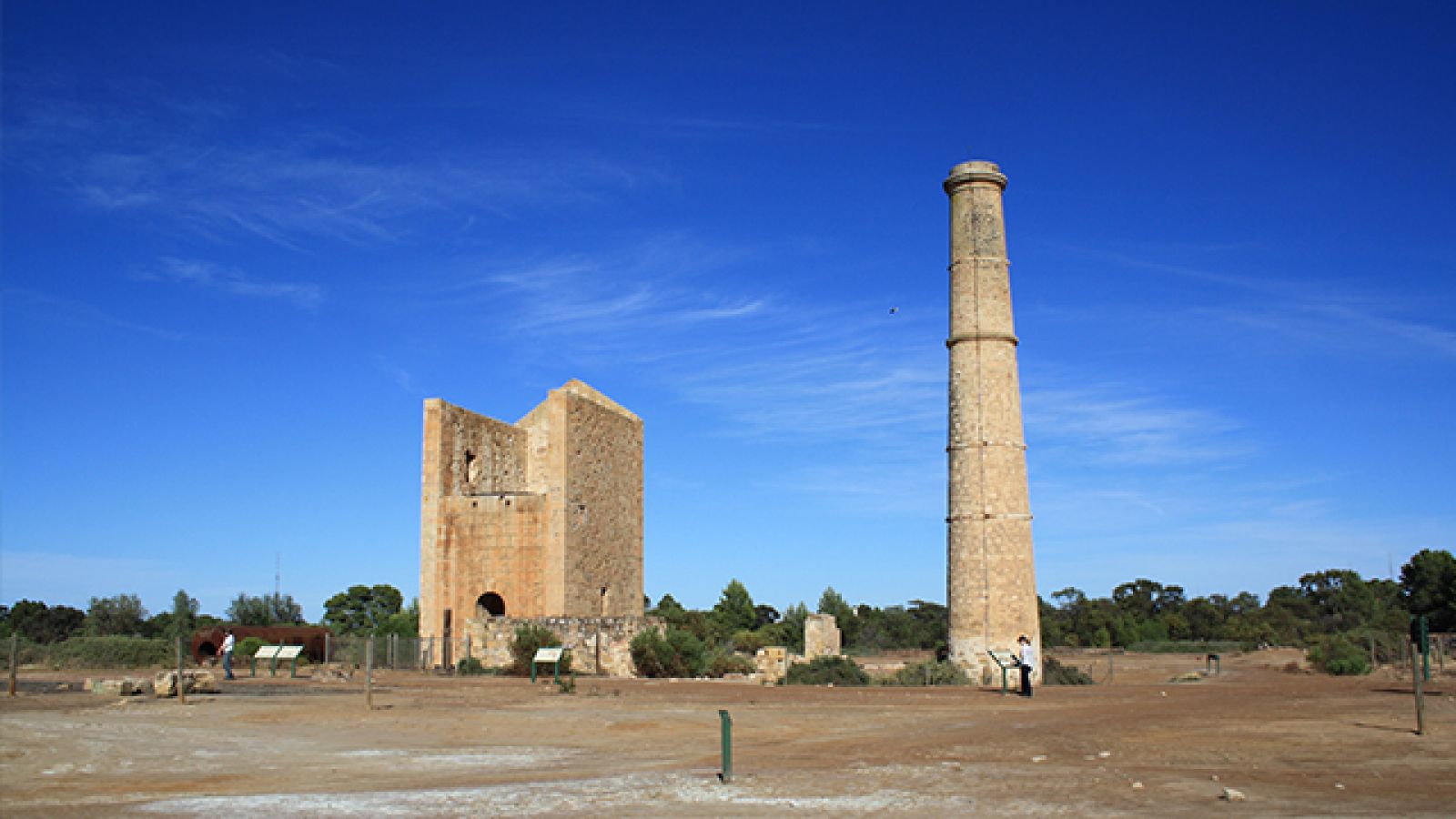Work of ANU archaeologists leads to national heritage listing

Moonta Mines. Image by: Copper Colonies project
Two mining sites crucial to Australia’s industrial history have been added to the National Heritage List, thanks in part to work by a trio of archaeologists from the ANU School of Archaeology and Anthropology.
The Burra and Moonta mining sites in South Australia had been among the largest mining operations in the 19th century, at one point supplying 5% of the world’s copper.
Moonta, along with nearby towns of Kadina and Wallaroo, forms the 'Copper Triangle' where Drs Ash Lenton, Catherine Frieman, and Sally K. May carried out small scale field work.
Dr Lenton and Dr Frieman prepared a report on their findings and recommended that Moonta and Burra, which were already on the South Australian state heritage list, be given national heritage status.
Dr Lenton stated that Moonta and Burra are two of the most important historic sites in the country.
“This was Australia's Industrial Revolution,” he said.
“These places changed Australia from a minor, low population, agricultural colony into a major industrial one with an ever-increasing population.”
The mines are notable for having been developed using largely Cornish skills and technology. The copper boom attracted more than 10,000 migrants from the United Kingdom – mostly Cornwell – to work in the region.
“Cornish mining sites and communities in Australia add a valuable extra dimension to world heritage, underlining the importance of what we have here,” Dr Lenton added.
As well as the being major centres of innovation in the mining industry, Dr May argued that the social history they represent is equally important.
“The rapid development of these areas and the influx of people from different countries and religions led to unique social and economic developments in the area,” she said.
As a direct descendent of the May Brothers who were key engineers for the Moonta and Wallaroo mines, Dr May has a personal interest in the area.
“I am delighted that this important part of Australia’s heritage has been recognised and I was very pleased to be able to play a small part.”
Dr Frieman said she’s thrilled that the Australian Government has recognised the significance of what she describes as an extremely important and unique historic landscape.
“I am particularly pleased by this decision because the local community is so incredibly active in protecting and promoting their history,” she said.
“The Copper Coast Council, National Trust of Moonta and National Trust of Kadina, and all the local volunteers who keep the museums open, welcome visitors and promote their local history and heritage.
“They have all done a huge amount of work towards the NHL and really deserve the national recognition for their work.”
The National Heritage List recognises places of outstanding heritage significance to Australia. The Burra and Moonta mining sites have been made the 109th and 110th listings in the register.
“The world would have been a very different place if it wasn't for the copper mining in Australia,” Dr Lenton said.
Follow Dr Catherine Frieman on Twitter @CJFrieman.